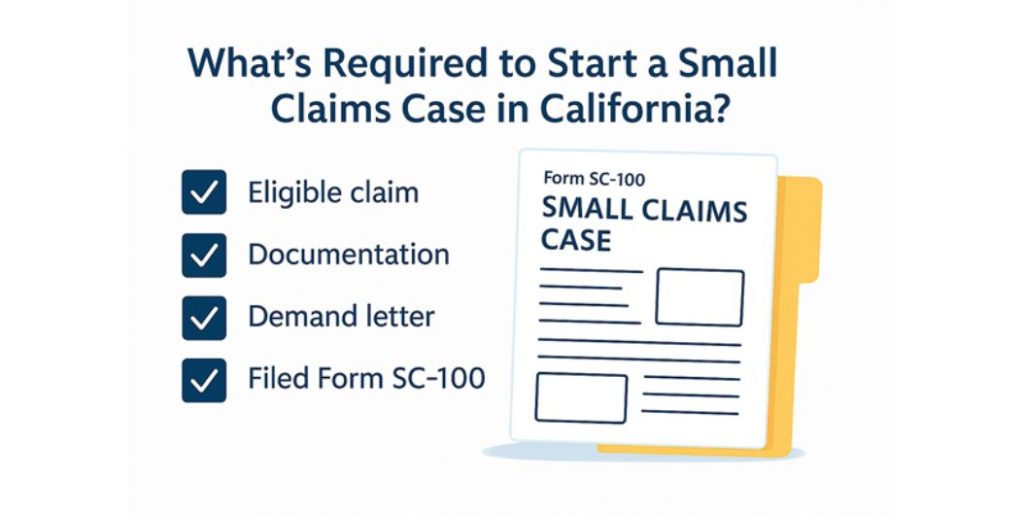Thinking about filing a small claims case in California?
Good news — the process is designed for everyday people, and you don’t need a lawyer.
However, you do need to meet a few basic requirements before the court will accept your case.
Here’s everything you need to start your California small claims case the right way.
California small claims court handles civil disputes where you’re primarily asking for money damages.
Common examples include:
Note: Small claims court cannot handle cases involving child custody, evictions, or complex lawsuits over more than $12,500.
California small claims court limits the amount you can sue for:
| Party Type | Maximum Claim Amount |
| Individual | $12,500 |
| Business or Entity | $6,250 |
If your case is worth more than the limit, you must waive the extra amount or file in a higher court.
Every case must be filed within a time limit based on when the issue happened:
| Type of Dispute | Deadline to File (Statute of Limitations) |
| Written Contract | 4 years |
| Oral Contract | 2 years |
| Property Damage | 3 years |
| Personal Injury | 2 years |
| Attorney Fee Dispute (After Arbitration) | 1 year |
Tip: File as soon as possible while evidence and witness memory are fresh.
Before filing, you’ll need:
Need help writing a demand letter?
Our tool generates it for you automatically when you start your claim.
At minimum, you’ll need to fill out:
| Form Name | Form Number |
| Plaintiff’s Claim and Order to Go to Small Claims Court | SC-100 |
| Other Plaintiffs or Defendants (Attachment) (if needed) | SC-100A |
| Fictitious Business Name Declaration (for DBAs) | SC-103 |
| Attorney Fee Dispute (After Arbitration) Attachment (only if needed) | SC-101 |
You must also file these with the correct California Superior Court and pay the filing fee.
Want help filling these out?
Use our guided tool to complete and file everything online
After filing, the law requires that you serve the person or business you’re suing with a copy of the lawsuit.
Options include:
You cannot serve the defendant yourself.
Personal Service must happen at least:
Substituted Service must happen at least:
We handle professional service of process for you too!
Learn more here
Filing small claims in California doesn’t have to be confusing or stressful.
At Countrywide Process, we help you:
Start Your California Small Claims Filing Now
Simple. Fast. Reliable.

Countrywide Process
May 06, 2025